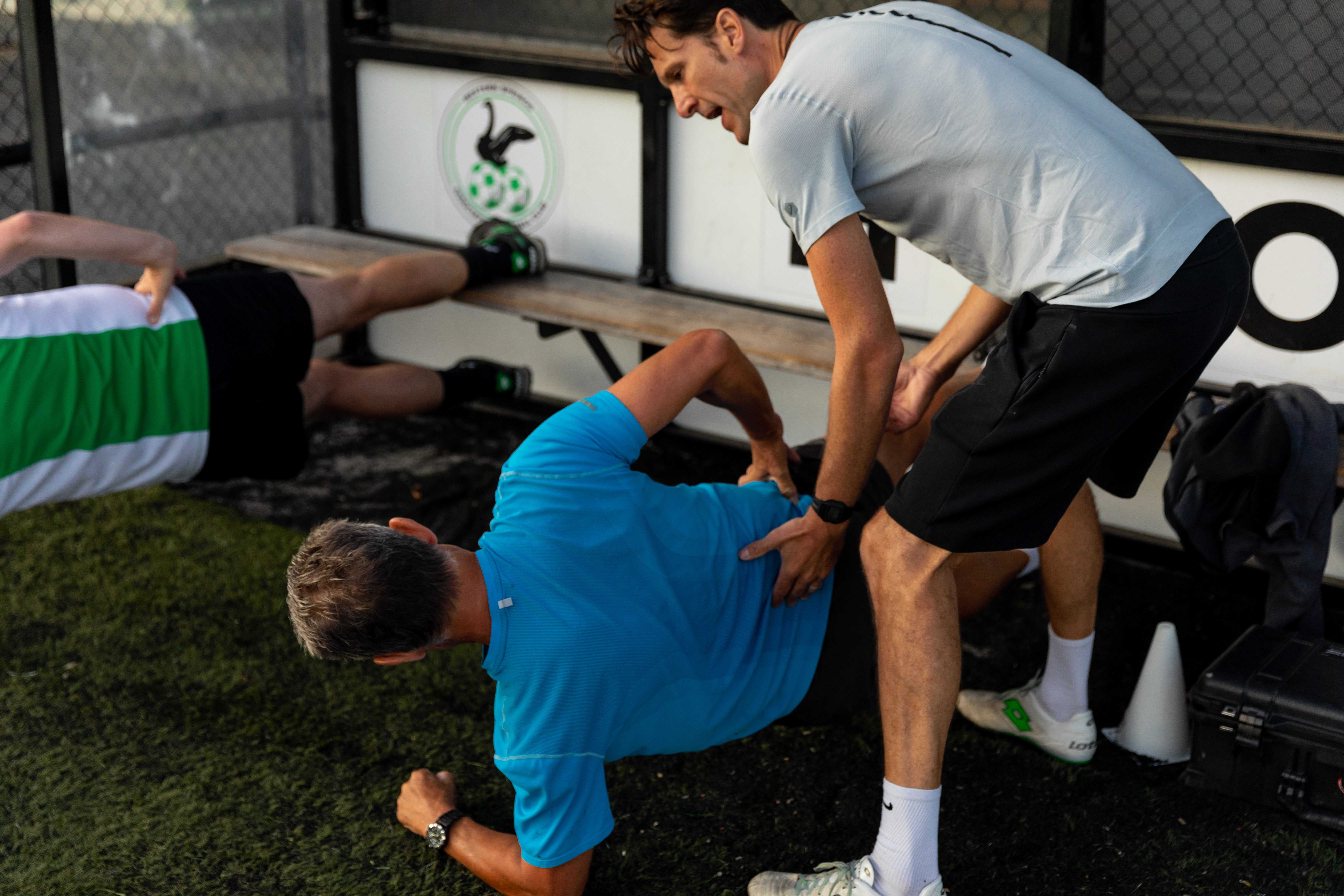The Holmich protocol for long standing adductor related groin pain
If you have had a long-standing groin injury, then the 10-week Holmich Protocol has been proven to be effective as a treatment. It was first described in 1999 by Per Holmich in The Lancet (Hölmich et al., 1999) but is still one of the most validated programmes for footballers who have chronic adductor-related groin pain. There are two phases to the protocol, and they include exercises to build strength in the hip adductors, abdominals, glute's and lower back.
The first phase of the @PerHolmich protocol can be used to help manage a player with adductor-related groin pain. Do you know how to initiate this rehabilitation programme? #FootballNetwork #FIFADiploma pic.twitter.com/lVCDKYdGl1
— FIFA Medical Network (@FIFAMedical) December 16, 2019
The second phase of the Holmich protocol is used to progress a player's strength and improve function. Do you know what it involves? Have a look at this clip to see. #FootballNetwork #FIFADiploma pic.twitter.com/S68h3p2lFJ
— FIFA Medical Network (@FIFAMedical) December 23, 2019
Recently the programme was validated by (Yousefzadeh, Shadmehr, Olyaei, Naseri, & Khazaeipour, 2018) who found that the Holmich programme may be an effective treatment for long-standing adductor-related groin pain (LSAGP). However, they suggested more emphasis should be paid to the hip adductor muscles' eccentric strength and have modified the programme to make it more effective. One of the exercises they included in their programme is the Copenhagen adductor exercise. The Copenhagen adductor exercise can reduce the risk of getting adductor injuries and should be done regularly to maximise the effect. Our Premier Football teams use the Copenhagen adductor exercise as well as the FIFA 11+ warm-up exercises to help reduce the risk of injury during the season.
When done regularly the Copenhagen adductor exercise can reduce the risk of developing groin pain by 40%. This video shows how the three progressions are done. #FootballNetwork #FIFADiploma
See the original paper from the @BJSM_BMJ to learn more: https://t.co/v6SclZeEz4 pic.twitter.com/9Z6NCVExMY— FIFA Medical Network (@FIFAMedical) January 20, 2020
Groin pain does not just affect footballers. If you have had an adductor injury, or have groin pain that is restricting your ability to play football or achieve your calls then we would love to hear from you. Make an appointment and we can hep prescribe the best way to help you return to your sport.
References:
Hölmich, P., Uhrskou, P., Ulnits, L., Kanstrup, I.-L., Nielsen, M. B., Bjerg, A. M., & Krogsgaard, K. (1999). Effectiveness of active physical training as treatment for long-standing adductor-related groin pain in athletes: randomised trial. The Lancet, 353(9151), 439-443.
Yousefzadeh, A., Shadmehr, A., Olyaei, G. R., Naseri, N., & Khazaeipour, Z. (2018). Effect of Holmich protocol exercise therapy on long-standing adductor-related groin pain in athletes: an objective evaluation. BMJ Open Sport & Exercise Medicine, 4(1), e000343. https://doi.org/10.1136/bmjsem-2018-000343

